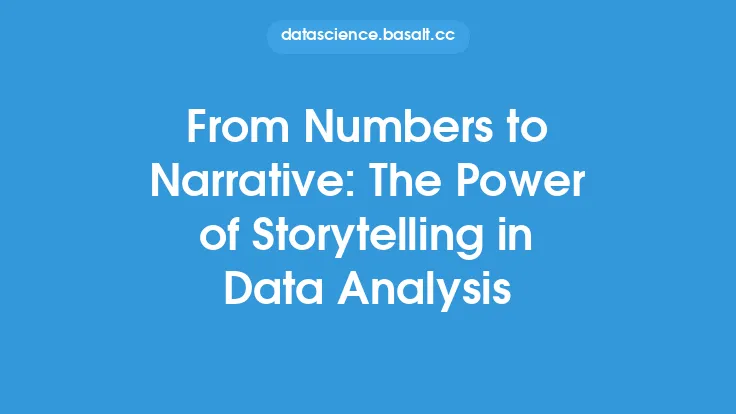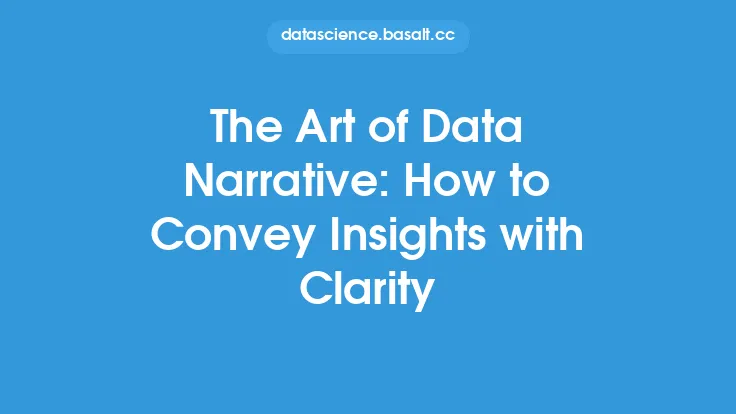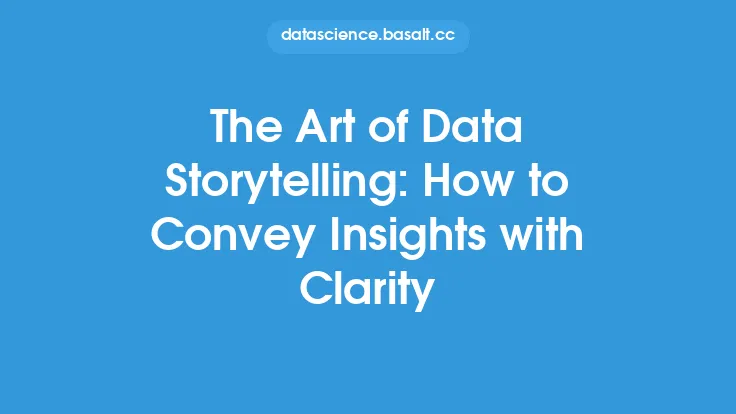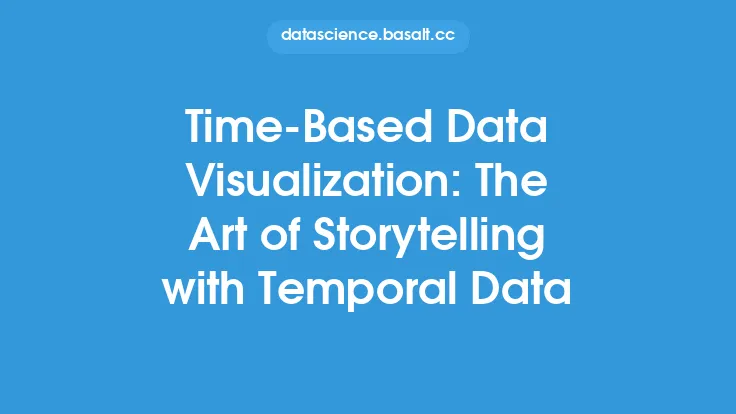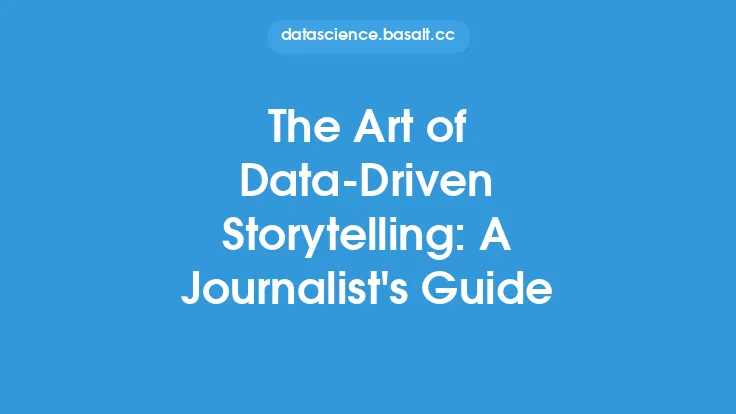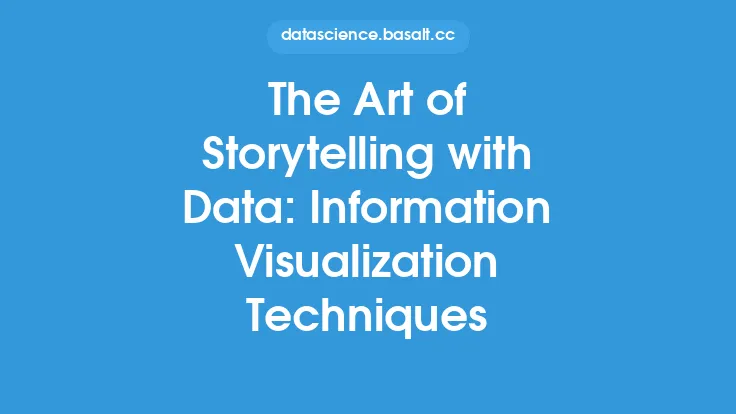In the realm of data analysis, the ability to extract meaning from numbers is a crucial skill that can make or break an organization's decision-making process. With the exponential growth of data in recent years, it has become increasingly important for data analysts to be able to communicate complex insights effectively to both technical and non-technical stakeholders. This is where the art of storytelling with data comes into play. Storytelling with data is the process of using data to tell a story that is both informative and engaging, allowing the audience to understand the insights and make informed decisions.
Introduction to Storytelling with Data
Storytelling with data is a multidisciplinary field that combines elements of data analysis, visualization, and narrative techniques to convey insights and meaning. It requires a deep understanding of the data, as well as the ability to identify the key messages and themes that need to be communicated. Effective storytelling with data can help to simplify complex concepts, making it easier for non-technical stakeholders to understand the insights and make informed decisions. Moreover, it can also help to identify areas of opportunity and risk, allowing organizations to take proactive measures to address these issues.
The Process of Storytelling with Data
The process of storytelling with data typically involves several key steps. The first step is to define the problem or question that needs to be answered. This involves working closely with stakeholders to understand their needs and requirements, as well as identifying the key metrics and data sources that will be used to inform the analysis. The next step is to collect and clean the data, ensuring that it is accurate, complete, and in a suitable format for analysis. Once the data has been prepared, the analyst can begin to explore and analyze it, using a range of techniques such as statistical modeling, data mining, and visualization.
Data Preparation and Cleaning
Data preparation and cleaning are critical steps in the storytelling with data process. This involves ensuring that the data is accurate, complete, and in a suitable format for analysis. It also involves handling missing values, outliers, and other data quality issues that can impact the accuracy and reliability of the insights. Data preparation and cleaning can be a time-consuming and labor-intensive process, but it is essential for ensuring that the insights are trustworthy and actionable. Some common data preparation and cleaning techniques include data normalization, feature scaling, and data transformation.
Data Analysis and Modeling
Data analysis and modeling are the heart of the storytelling with data process. This involves using a range of techniques such as statistical modeling, data mining, and machine learning to identify patterns, trends, and relationships in the data. The goal of data analysis and modeling is to extract insights and meaning from the data, and to identify the key drivers and factors that are influencing the outcomes. Some common data analysis and modeling techniques include regression analysis, decision trees, and clustering analysis.
Data Visualization and Communication
Data visualization and communication are critical components of the storytelling with data process. This involves using a range of visualization tools and techniques to communicate the insights and findings to both technical and non-technical stakeholders. Effective data visualization can help to simplify complex concepts, making it easier for stakeholders to understand the insights and make informed decisions. Some common data visualization tools and techniques include bar charts, line charts, scatter plots, and heat maps.
Best Practices for Storytelling with Data
There are several best practices that can help to ensure effective storytelling with data. The first is to keep the story simple and focused, avoiding unnecessary complexity and technical jargon. The second is to use visualization and narrative techniques to convey the insights and findings, making it easier for stakeholders to understand the story. The third is to use data to support the story, rather than relying on anecdotes or intuition. Finally, it is essential to be transparent and honest about the limitations and uncertainties of the data, avoiding misleading or deceptive storytelling.
Common Challenges and Pitfalls
There are several common challenges and pitfalls that can impact the effectiveness of storytelling with data. The first is the risk of data overload, where the audience is presented with too much information, making it difficult to understand the insights and findings. The second is the risk of data misinterpretation, where the insights and findings are misinterpreted or misunderstood. The third is the risk of bias and subjectivity, where the story is influenced by personal opinions or biases. Finally, there is the risk of technical complexity, where the story is too technical or complex for non-technical stakeholders to understand.
Conclusion and Future Directions
In conclusion, storytelling with data is a powerful tool for extracting meaning from numbers and communicating insights to both technical and non-technical stakeholders. By following best practices and avoiding common challenges and pitfalls, data analysts can create compelling and informative stories that drive business decisions and outcomes. As the field of data analysis continues to evolve, it is likely that we will see new and innovative approaches to storytelling with data, including the use of artificial intelligence, machine learning, and other advanced technologies. Ultimately, the art of storytelling with data has the potential to transform the way we communicate and make decisions, and it is an essential skill for any data analyst or business professional.
